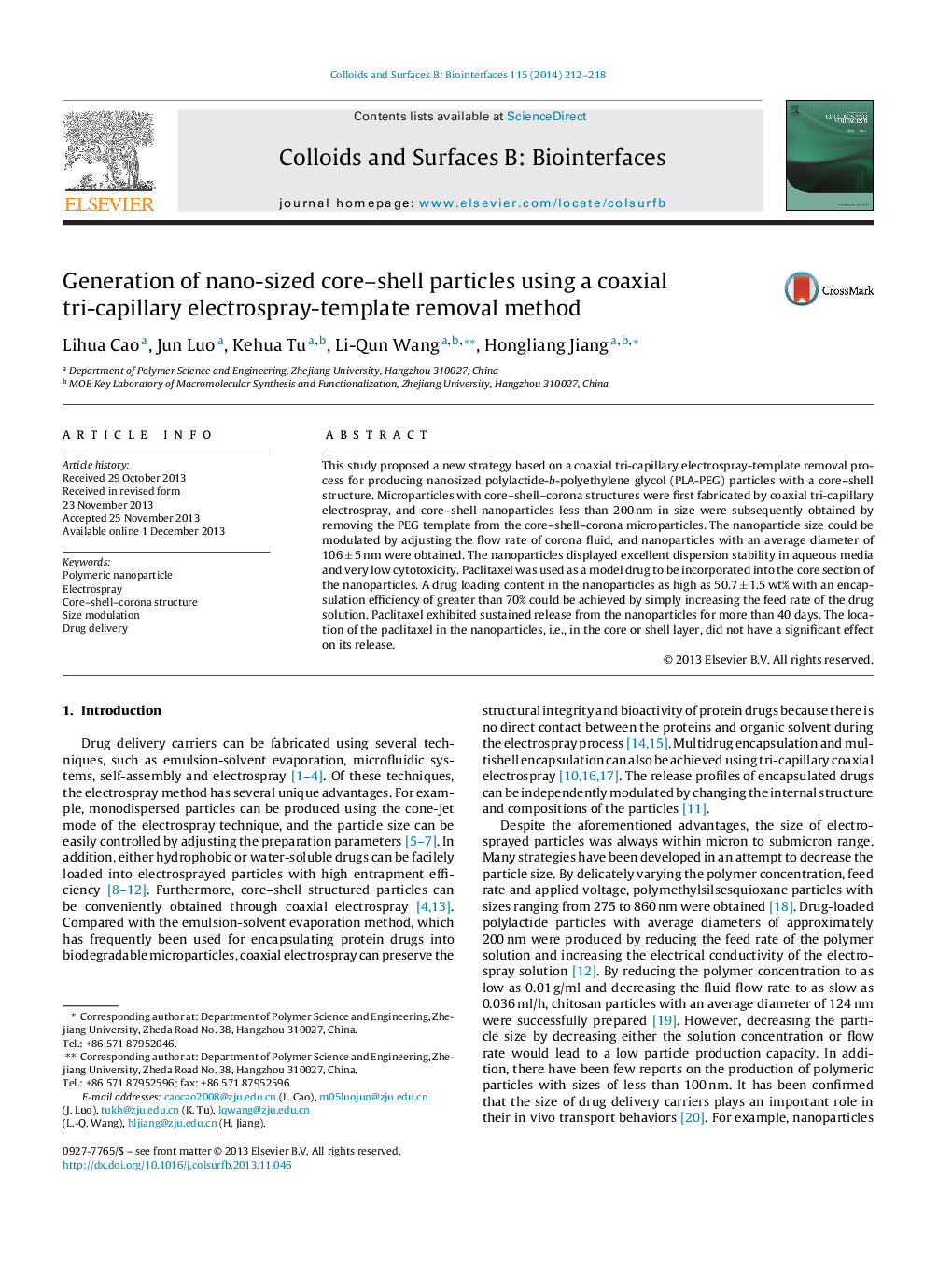| Article ID | Journal | Published Year | Pages | File Type |
|---|---|---|---|---|
| 599731 | Colloids and Surfaces B: Biointerfaces | 2014 | 7 Pages |
•Core–shell nanoparticles were fabricated by coaxial tri-capillary electrospray-template removal method.•The electrosprayed microparticles presented core–shell–corona structure.•The nanoparticles were downsized to 106 nm by adjusting flow rate of corona fluid.•The nanoparticles displayed excellent dispersion stability and low cytotoxicity.•Paclitaxel loading content in the nanoparticles was achieved as high as 50 wt%.
This study proposed a new strategy based on a coaxial tri-capillary electrospray-template removal process for producing nanosized polylactide-b-polyethylene glycol (PLA-PEG) particles with a core–shell structure. Microparticles with core–shell–corona structures were first fabricated by coaxial tri-capillary electrospray, and core–shell nanoparticles less than 200 nm in size were subsequently obtained by removing the PEG template from the core–shell–corona microparticles. The nanoparticle size could be modulated by adjusting the flow rate of corona fluid, and nanoparticles with an average diameter of 106 ± 5 nm were obtained. The nanoparticles displayed excellent dispersion stability in aqueous media and very low cytotoxicity. Paclitaxel was used as a model drug to be incorporated into the core section of the nanoparticles. A drug loading content in the nanoparticles as high as 50.7 ± 1.5 wt% with an encapsulation efficiency of greater than 70% could be achieved by simply increasing the feed rate of the drug solution. Paclitaxel exhibited sustained release from the nanoparticles for more than 40 days. The location of the paclitaxel in the nanoparticles, i.e., in the core or shell layer, did not have a significant effect on its release.
Graphical abstractFigure optionsDownload full-size imageDownload as PowerPoint slide
